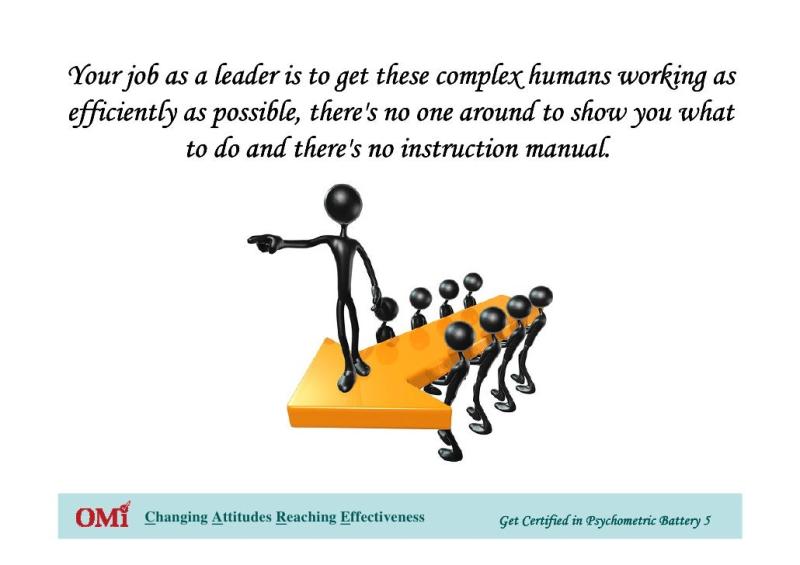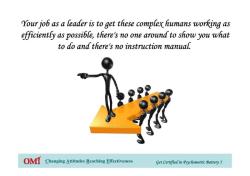What is the subtle art of managing up?
Managing up is a skill that involves effectively working with and influencing individuals in positions above you within an organization's hierarchy. The subtle art of managing up is about building positive relationships with your superiors, understanding their needs and priorities, and strategically aligning your efforts to support the overall success of the organization. Here are some key principles of the subtle art of managing up:
Understanding Your Manager's Goals:
- Take the time to understand your manager's objectives, priorities, and challenges. Knowing what your manager values and is accountable for allows you to align your efforts with the broader goals of the team and organization.
Effective Communication:
- Communicate clearly, concisely, and strategically. Tailor your communication style to your manager's preferences and priorities. Provide regular updates on your progress, and be proactive in sharing relevant information.
Anticipating Needs:
- Develop the ability to anticipate your manager's needs and be proactive in addressing them. This may involve taking initiative, offering solutions to potential challenges, and staying ahead of deadlines.
Building Trust:
- Trust is essential in any professional relationship. Demonstrate your competence, reliability, and commitment to the team's success. Establishing trust with your manager can lead to increased autonomy and responsibility.
Adaptability:
- Be flexible and adaptable to changes in priorities and strategies. Managers appreciate team members who can pivot when needed and contribute positively to the organization's ability to navigate change.
Problem-Solving:
- Develop strong problem-solving skills. When challenges arise, instead of presenting problems, offer well-thought-out solutions. This demonstrates initiative and a commitment to finding constructive resolutions.
Seeking Feedback:
- Actively seek feedback from your manager on your performance and ways to improve. This not only shows a commitment to personal and professional development but also demonstrates a willingness to collaborate.
Managing Your Own Career:
- Take ownership of your professional development and career path. Communicate your career goals to your manager and seek guidance on how you can align your aspirations with the organization's objectives.
Strategic Networking:
- Build positive relationships not only within your team but also across the organization. Networking can provide you with valuable insights, resources, and support, and it demonstrates your commitment to the broader success of the company.
Staying Positive and Solutions-Oriented:
- Maintain a positive attitude, even in challenging situations. Managers appreciate team members who can maintain composure and focus on solutions rather than dwelling on problems.
Prioritizing Work Effectively:
- Effectively prioritize your workload based on the organization's goals and your manager's priorities. This ensures that your efforts align with the overall strategy and objectives of the team.
Balancing Assertiveness and Diplomacy:
- Learn to balance assertiveness with diplomacy. Express your opinions and ideas, but do so in a way that respects your manager's perspective and maintains a positive working relationship.
The subtle art of managing up is about creating a collaborative and mutually beneficial relationship with your superiors. It involves being attentive, adaptable, and strategic in your approach to contribute to the success of the team and the organization as a whole.
What is the subtle art of managing up?
The subtle art of managing up is the ability to build and maintain positive relationships with your supervisor and other senior leaders in your organization. It is about understanding their goals and priorities, and working to align your own work with them. It is also about communicating effectively with them and managing their expectations.
Managing up is not about flattery or manipulation. It is about being genuine and sincere, and being proactive in building relationships with your supervisors. It is also about being a high performer and delivering results.
How do individuals effectively manage upward in organizational settings?
There are a number of things that individuals can do to effectively manage upward in organizational settings. These include:
- Understanding your supervisor's goals and priorities: It is important to understand what your supervisor is trying to achieve, both personally and professionally. Once you understand their goals, you can start to align your own work with them.
- Communicating effectively: Effective communication is key to managing up. You need to be able to communicate your ideas and progress clearly to your supervisor. You also need to be able to listen to their feedback and take action on it.
- Managing expectations: It is important to set clear expectations with your supervisor about your work. This includes communicating your goals, deadlines, and any potential challenges.
- Being proactive: Don't wait for your supervisor to come to you with problems or solutions. Be proactive in identifying and addressing issues.
- Delivering results: The best way to manage up is to be a high performer and deliver results. This means meeting your deadlines and goals, and exceeding expectations.
Are there specific skills or approaches associated with the subtle art of managing up?
Yes, there are a number of specific skills and approaches associated with the subtle art of managing up. These include:
- Building rapport: The first step to managing up is to build rapport with your supervisor. This means getting to know them on a personal level and developing a relationship with them.
- Networking: Networking is another important skill for managing up. It is important to get to know other senior leaders in your organization and to build relationships with them. This will help you to understand their goals and priorities, and to get their support for your own work.
- Being visible: It is important to be visible to your supervisor and other senior leaders in your organization. This means attending meetings, volunteering for projects, and making contributions.
- Being a team player: It is important to be a team player and to support your supervisor and colleagues. This means being willing to help out when needed and being supportive of the team's goals.
- Being positive: It is important to be positive and enthusiastic. This will make you more pleasant to work with and will make you more likely to be promoted.
Managing up is an important skill for anyone who wants to be successful in their career. By following the tips above, you can develop the skills and approaches necessary to effectively manage upward in your organization.







